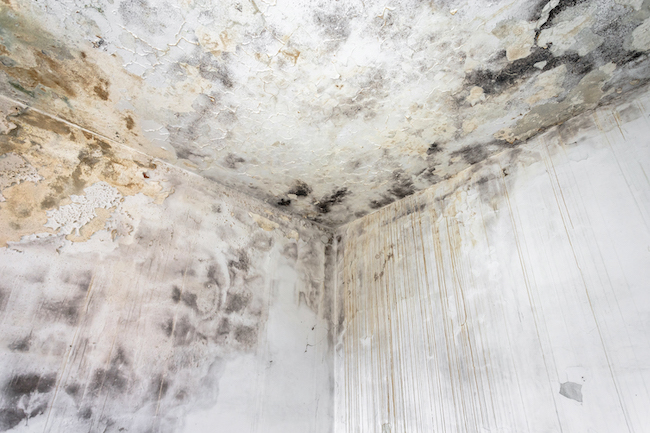You need to hire a professional for any mold classified as toxic or extensive mold problems. Here are all the various types of molds in your home and how to identify each one.
Acremonium
Frequently found in home humidifiers, HVAC cooling coils, drain and drip pans, and close to leaky windows. It’s often seen with Stachybotrys and requires removal by a professional.
Alternaria
Usually found in shower stalls, bathtubs, and near sinks. Its presence usually indicates water damage has occurred, and the mold will quickly spread. However, unless the colony has grown extremely large, you can safely extract it with proper cleaning.
Aspergillus
Often arises on wooden surfaces. Extensive infestation should be extracted by a professional.
Aureobasidium
Found in the dark, wet, water-damaged areas such as underneath carpets, behind wallpaper, and on wooden surfaces. Protective clothing, like eye protection and gloves, should be worn during the clean-up of small infestations.
Chaetomium
Chaetomium thrives in water-damaged drywall, wooden surfaces, wallpaper, and under wet carpet and roof shingles. However, it is often misconceived as black mold, professionals best handle removal.
Cladosporium
Typically found on carpet, upholstery, drapes, and under floorboards, small colonies can be cleaned by a homeowner, but larger ones require a professional.
Fusarium
Often found growing on food, it spreads quickly and can be discovered in carpet, wallpaper, and water-damaged materials. So treat any clean-up with caution.
Mucor
Found in highly wet spaces where condensation has formed, such as near air conditioners, HVAC ductwork, and leaky windows and doors. Classified as allergenic, small patches of Mucor can be cleaned by the homeowner. More extensive infections require a professional.
Penicillin
It is often located in HVAC ducts, wallpaper, mattresses, and carpet. The homeowner can clean small colonies with care. However, professionals should remove larger infestations.
Stachybotrys
Usually found in areas inside a home that have been exposed to excessive water and humidity for weeks, it develops behind walls and ceilings on wood. Professionals must do the removal and disposal of affected building materials.
Trichoderma
Can develop on wallpaper, carpet, fabrics, and surfaces exposed to extreme moisture. Normally non-pathogenic, Trichoderma can be cleaned by the homeowner using appropriate protective steps. However, it does produce an enzyme that attacks wood, textiles, paper and can cause damage to building foundations.
Ulocladium
Typically found in kitchens, bathrooms, and basements that have suffered water damage or zones that stay wet for long periods. Caught early, clean up can be done by a homeowner.

